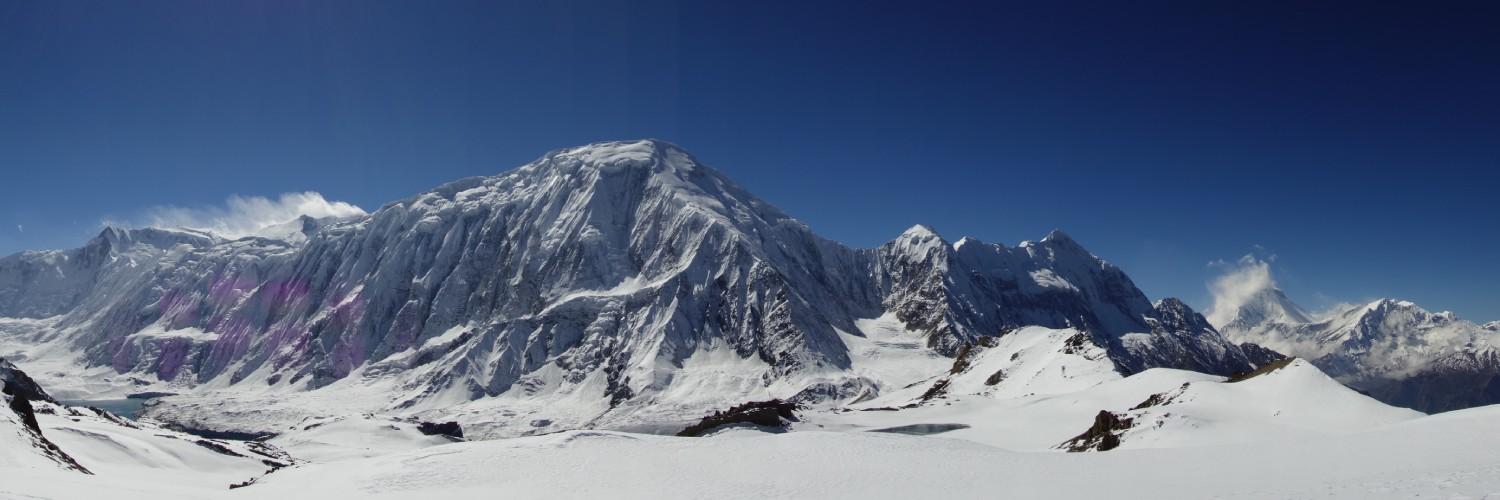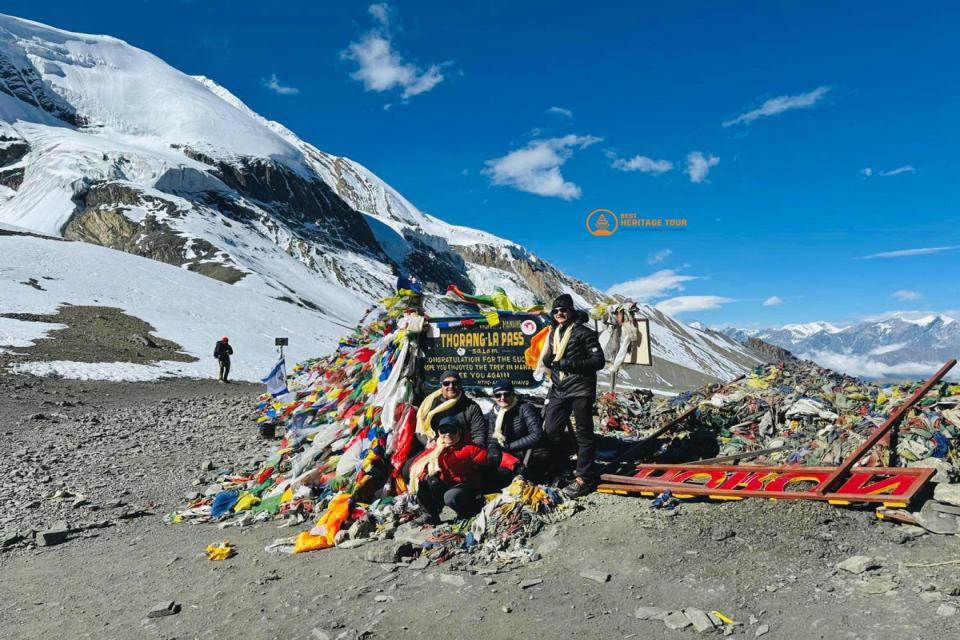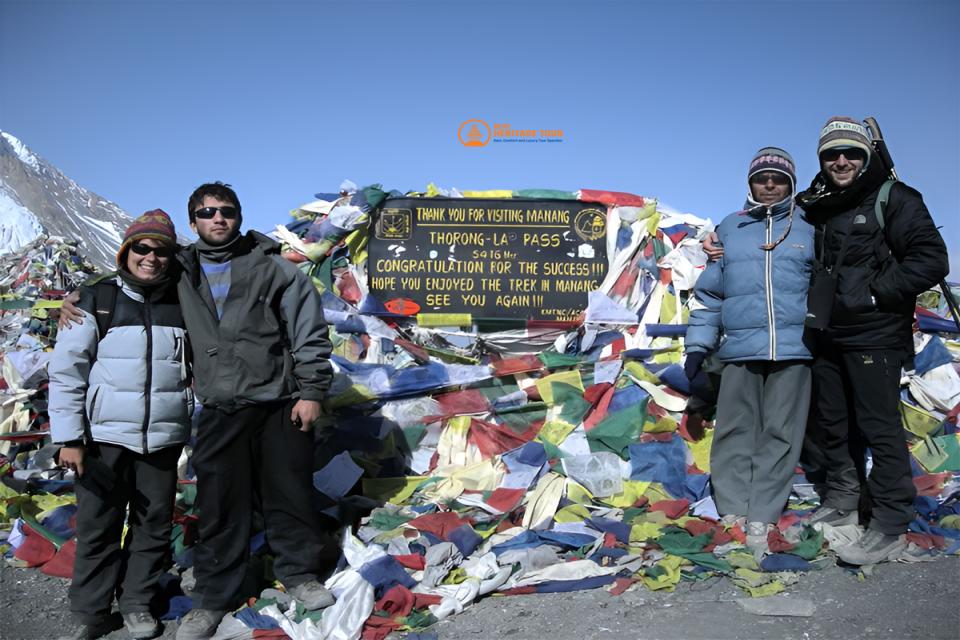High above the glacial basin of Tilicho and deep beneath the endless blue of the Annapurna sky lies one of Nepal’s most striking yet little-known natural wonders - Mesokanto La Pass. Perched at an altitude of approximately 5,330 meters, this rugged mountain pass connects the tranquil Manang Valley on the eastern flank of the Annapurna range with the arid highlands of Mustang to the west.
While the neighboring Thorong La Pass (5,416m) draws global attention as one of the most crossed passes in the Himalayas, Mesokanto La remains a quiet giant - a wild, raw, and awe-inspiring corridor sculpted by time, ice, and wind. For geographers, trekkers, and nature enthusiasts alike, Mesokanto La embodies everything that makes the Himalayas both mysterious and magnificent.
Where Exactly Is Mesokanto La Pass?
Mesokanto La sits in the Annapurna Conservation Area (ACA) - Nepal’s largest protected region, covering over 7,600 square kilometers. Geographically, the pass lies to the west of Tilicho Lake, one of the world’s highest alpine lakes, and to the south of Nilgiri and Dhaulagiri peaks. It acts as a natural link between two vastly different landscapes:
-
The lush alpine valleys of Manang on the east - rich in forests, rivers, and glaciers.
-
The barren trans-Himalayan desert of Mustang on the west - dry, dusty, and wind-sculpted.
From a topographic perspective, Mesokanto La represents one of the lowest points in the ridgeline that separates the Annapurna and Dhaulagiri massifs, making it a strategic natural route for both ancient traders and modern explorers.
Altitude and Climatic Conditions
At over 5,000 meters, Mesokanto La lies firmly in the alpine zone where oxygen levels drop to nearly half that of sea level. The air is thin, dry, and cold.
Average temperature ranges:
-
Autumn (Sept-Nov): -5°C to 10°C
-
Spring (Mar-May): -8°C to 12°C
-
Winter (Dec-Feb): -20°C or below
Winds are another defining feature. The western Mustang winds often pick up after midday, making morning hours calmer for crossing. The high pass is also prone to rapid weather changes - clear skies can turn to snow squalls within an hour.
Because of its elevation and exposure, Mesokanto La serves as an important climatic divide. Moisture-laden monsoon clouds traveling from the Bay of Bengal lose most of their moisture on the Manang side, leaving the Mustang side dry and desert-like. This orographic barrier effect explains the dramatic contrast between the two valleys - one green and lush, the other arid and ochre.
The Connection Between Manang (Tilicho) and Mustang (Jomsom)
Mesokanto La is more than just a physical landmark; it is a natural bridge between two worlds.
To the East: Tilicho Basin
On the eastern side lies Tilicho Lake (4,919m) - an otherworldly turquoise body of water framed by glaciers and vertical cliffs. This lake, revered in Hindu mythology, is said to be mentioned in the Ramayana, where it is described as the ancient Kak Bhusundi Lake. The lake’s outflow feeds tributaries of the Marsyangdi River, which eventually merges with the Trishuli and the great Narayani River system.
To the West: Mustang Plateau
Descending westward from the pass leads into the Mustang region, where the terrain shifts dramatically. The moisture shadow effect creates dry canyons, wind-eroded cliffs, and a landscape reminiscent of Tibet’s high plateau. The Kali Gandaki River cuts deep gorges through this terrain, forming one of the world’s deepest valleys between Dhaulagiri and Annapurna.
In essence, Mesokanto La stands as a watershed divide - separating the Marsyangdi (to the east) and Kali Gandaki (to the west) basins. This makes it a key feature in the hydrology of central Nepal.
Scenic and Natural Significance
Few places in the Himalayas offer such dramatic contrasts in such a short span. From the icy waters of Tilicho to the golden cliffs of Mustang, Mesokanto La embodies the full spectrum of Himalayan geography.
1. Panoramic Views
On a clear day, the view from the pass is staggering. To the north rise the serrated ridges of Tilicho Peak (7,134m), Nilgiri North (7,061m), and the Dhaulagiri range, while to the east, the Annapurna massif stretches endlessly. To the west, the horizon opens into the barren desert valleys of Upper Mustang and the Tibetan plateau beyond.
2. Flora and Fauna
The ecosystem here is fragile yet resilient. The Manang side supports alpine shrubs, dwarf junipers, and meadows where blue poppies bloom in spring. As one descends into Mustang, vegetation disappears almost entirely, replaced by rock, gravel, and hardy lichens.
Wildlife sightings are rare but precious - blue sheep, Himalayan snowcocks, and, on rare occasions, snow leopards inhabit these heights.
Historical Importance
Mesokanto La Pass, though less traversed today, has deep historical and cultural roots. Long before it became known to trekkers, Mesokanto La was part of an ancient trans-Himalayan trade corridor. Local traders from Manang and Mustang would cross this high pass with salt, wool, and barley, bartering goods between the dry northern plateaus and the fertile southern valleys. Although the route is no longer used commercially, remnants of these old trails and stone shelters still exist near the base of the pass.
Mesokanto La vs. Thorong La: A Tale of Two Passes
Though separated by only a few mountain ridges, Mesokanto La and Thorong La tell two very different stories of the Annapurna Himalayas.
|
Feature |
Thorong La Pass |
Mesokanto La Pass |
|---|---|---|
|
Altitude |
5,416 m |
5,330 m |
|
Location |
Between Manang & Muktinath |
Between Tilicho & Jomsom |
|
Accessibility |
Well-trodden and developed |
Remote and less defined |
|
Traffic |
Hundreds of trekkers daily (peak season) |
Very few visitors |
|
Facilities |
Teahouses on both sides |
Sparse or none near the pass |
|
Scenic Value |
Broad panorama of Annapurna and Dhaulagiri |
More dramatic terrain and solitude |
|
Symbolism |
Adventure and achievement |
Wilderness and exploration |
While Thorong La symbolizes the classic Annapurna experience - comfort mixed with challenge - Mesokanto La represents pure Himalayan rawness. It is not for everyone, and that is precisely why it remains so special.
Best Time to Visit Mesokanto La
Although it’s not a trekking route in itself, visiting or observing the pass is best done in autumn (September-November) and spring (March-May) when:
-
The skies are crystal clear.
-
Snow conditions are stable.
-
The lake and surrounding glaciers are accessible.
Winter brings heavy snow and dangerous conditions, while monsoon clouds obscure the views and trigger landslides on approach routes.
Mesokanto La in the Modern Context
In recent years, Mesokanto La has slowly began appearing on the radar of adventure enthusiasts and photographers. Unlike Thorong La, which has become part of the classic trekking infrastructure, Mesokanto remains untouched and uncommercialized.
The absence of built-up lodges, cell service, and crowds adds to its mystique. A few local guides from Manang and Jomsom possess traditional knowledge of the pass routes, passed down through generations.
Conclusion: Preserving the Spirit of Mesokanto La
The story of Mesokanto La Pass is not just about altitude or geography - it’s about balance. Between east and west, water and desert, civilization and wilderness. It represents the Himalayan soul - vast, untamed, and sacred.
As Nepal continues to grow as a global trekking destination, the challenge lies in preserving such fragile wonders. Raising awareness about places like Mesokanto La ensures they are respected, studied, and protected - not commercialized beyond recognition.
And if you ever wish to explore the region, witness Tilicho’s mirrored calm, and stand where ancient traders once crossed the spine of the Himalayas, make sure you travel with experts who know these mountains not just by map, but by heart.
Plan Your Visit with Best Heritage Tour
Experience Nepal’s hidden high-altitude marvels with professionals who combine safety, authenticity, and cultural depth.
Phone / WhatsApp / Viber: +977-9851149197 / +977-9810043046
Email: info@bestheritagetour.com / bestheritagetour@gmail.com
Info & Booking: www.bestheritagetour.com
Office: Thamel Marg, Kathmandu, Nepal
Author: Best Heritage Tour
Date: 28th October, 2025



